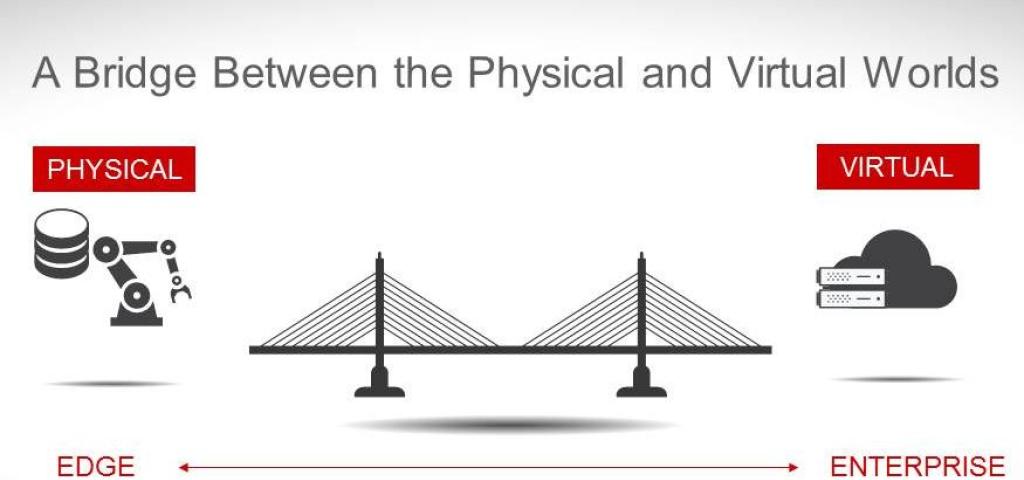
Bridging the Physical and Virtual Worlds

This week I had the opportunity to present the keynote at the annual Embedded World conference in Germany. It was a great chance to share insights on how a system-level approach to the Internet of Things (IoT) will help businesses bridge the gap between the physical and virtual worlds. This can also be described as bridging the edge to the enterprise or embedded device/sensor to the cloud.
When describing the embedded devices that make up the physical world, some of the characteristics that come to mind include fixed function, hard real-time performance, guaranteed latency, determinism, and occasionally connected/not always IP addressable. With the emergence of the IoT, the landscape has drastically changed. Connectivity is now a must, there is continuous deployment and integration, there is a need to unlock machine data instead of locking it down, and traditional development methods are insufficient for system-level implementation.
This shift in landscape has created a tremendous opportunity for Wind River to apply its 30-plus year history of providing and serving as the software foundation for devices, systems, and networks, in order to help accelerate the IoT for the industry and our customers.
For our customers, the primary business interests driving their IoT demands are optimization and transformation. On the optimization side, they need to maximize the value of existing assets and investments, introduce new efficiencies, and make positive shifts in OPEX and CAPEX. On the transformation side, they’re looking to access new revenue streams, transition to new business models and effectively harness new sources of data being created by the IoT.
From a technology perspective, bridging the physical and virtual world to accelerate IoT and help our customers optimize and transform their businesses requires an end-to-end approach. The graphic below outlines the essential tenets of edge to enterprise IoT solutions:

To this end, yesterday we announced additions and enhancements to our comprehensive Wind River Helix product portfolio, including the addition of application and data services in the cloud to our operating system suite and IoT software platform. Our end-to-end technology offering now enables IoT advancements from the secure and managed intelligent devices at the edge, through gateways, across the network, and up into the cloud.
Specifically, Wind River provides safe and secure operating systems, real-time virtualization, and connectivity agents at the edge; proven infrastructure platforms, orchestration, and network services across the network; and edge management and API management up in the cloud.

I’m personally very excited at the prospect of how the IoT will increase the efficiencies of existing processes and promote a complete reinvention and transformation of future business. And I’m just as excited for the opportunity Wind River has to drive and enable these IoT advancements. As our founder Jerry Fiddler said in the very early Wind River days, long before IoT even had a name, “The building of the connected world, with hundreds of billions of connected smart devices has hardly begun. It’s a spectacular opportunity, and Wind River will lead the way.”
Stay tuned for my next blog post, where I’ll discuss the merging of the compute and network views.

